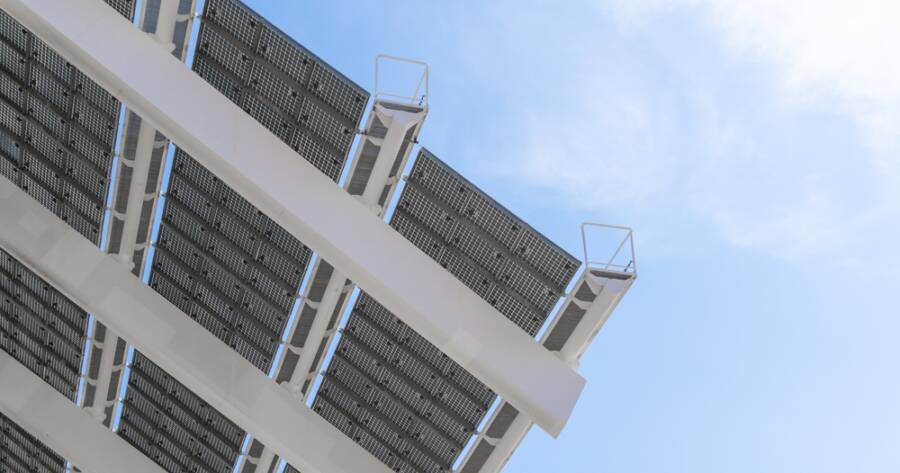As the European Union moves toward greener living, homeowners are looking for ways to combine sustainability with good design. One smart solution gaining attention is the solar pergola — a sleek outdoor structure that offers shade while generating clean electricity. Ideal for gardens, patios, and terraces, dual-purpose installations are changing how people think about home energy. With their blend of modern aesthetics and practical function, solar pergolas are quickly becoming a favorite in eco-conscious households across Europe.
What Is a Solar Pergola?
A solar pergola is a traditional pergola fitted with integrated solar panels. While it looks like a stylish shade structure, it also functions as a small energy plant. The roof is designed with photovoltaic (PV) panels that capture sunlight and convert it into usable electricity. This energy can help power your home, charge an electric vehicle, or reduce your reliance on the public grid.
Unlike rooftop solar systems, which are limited to certain roof angles or may face regulatory hurdles in historic city centers, pergolas offer greater flexibility in placement and design. They can be built in gardens, beside pools, over outdoor dining areas, or even in parking spaces — making use of areas that would otherwise remain underutilized.
Some models are free-standing, while others can be attached to a building. Many are modular, allowing you to expand the structure or adjust its angle to maximize solar exposure throughout the year.
Combining Design and Efficiency
One of the standout benefits of solar pergolas is their visual appeal. While early solar installations were often purely functional, today’s solar pergolas are built with design in mind. Slim panel frames, concealed wiring, and minimalist structures make them blend effortlessly into both modern and traditional landscapes.
Materials such as treated wood, powder-coated steel, or aluminum can be matched to the home’s existing architecture, while the solar panels themselves can be chosen in semi-transparent or tinted versions that allow filtered light through. This soft lighting effect is perfect for shaded seating areas without creating a dark or enclosed feeling.
In southern European countries, where intense summer sun is a concern, solar pergolas also help reduce heat buildup around the home. By providing shade to outdoor spaces or even parts of the building itself, they can naturally lower cooling needs — supporting energy efficiency on multiple fronts.
A Renewable Energy Solution at Ground Level
While rooftop solar remains popular, not every home is well-suited for it. Roof shapes, slopes, shading from trees or neighboring buildings, or legal protections can make solar panel installation difficult or even impossible in some areas. That’s where solar pergolas offer a real advantage.
Because they are installed at ground level, solar pergolas can be placed in optimal positions for sun exposure — and are often easier to maintain. Cleaning panels and checking connections becomes a straightforward task. In areas where homeowners have garden space but complex roofs, a pergola may be the best way to generate solar power efficiently.
Some pergola systems also integrate battery storage, allowing you to store energy for evening use or feed excess electricity into the grid, depending on your country’s energy policy. This flexibility makes solar pergolas a smart choice for households looking to reduce their carbon footprint without compromising on comfort or style.
Incentives and Compatibility in the EU
Across the EU, national and regional incentives continue to support residential solar adoption. In many countries, the cost of installing a solar pergola may be reduced through tax credits, grants, or low-interest financing. Some energy providers offer feed-in tariffs or net metering schemes, allowing homeowners to receive credit for surplus power sent back to the grid.
Importantly, most solar pergola systems are compatible with EU electrical standards and can be linked to smart meters or home energy management systems. This means that energy production can be tracked in real time, giving users insight into their savings and performance.
Installation requirements may vary depending on your local planning laws, especially in protected zones or multi-unit dwellings. However, because pergolas are generally considered garden structures, they often face fewer restrictions than roof-mounted panels — making them a smoother route to solar adoption for many urban and suburban residents.
Power, Beauty, and Comfort in One Structure
Solar pergolas are redefining what renewable energy looks like at home. They offer a practical way to produce clean electricity, reduce energy bills, and enjoy comfortable outdoor living — all while enhancing the look and feel of your property.
As the EU continues to support decentralized and sustainable energy, solar pergolas provide a solution that fits both rural homes and city terraces. They represent the kind of innovation that makes going green more accessible, attractive, and adaptable to real-life needs. Whether you’re hosting a summer dinner or powering your lights, these shaded structures are proving that sustainability can be both beautiful and smart.

